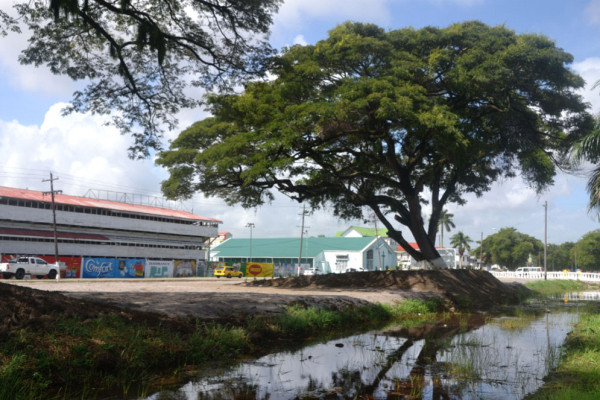I grew up in Guyana hearing that our capital was labelled ‘The Garden City of the Caribbean’, but it was something that never engaged me. I had never travelled, never seen the other cities; also, I was a West Dem boy, born and raised. Apart from my time at Sacred Heart School, when I boarded Monday to Thursday at my DeSouza cousins in Carmichael Street, I spent no time in Georgetown. During my years at Saints I used the ferry every day to go home to Vreed-en-Hoop, and after Saints I worked at ‘the Base’, now Timehri. Georgetown and I were virtually strangers; I am still learning the place after moving back here eight years ago. Of course, I remember how pretty Main Street looked with those large rambling trees, and Lamaha Street with its graceful two-storey estate-style houses sporting acres of wood, and D’Urban Park was a beautiful sight with acres of open green, but ‘Garden City’ wasn’t in my lexicon when I migrated in the 1950s.
It was only when my music became popular, with Tradewinds travelling the Caribbean, that the phrase began to take on meaning for me. I had seen the powerful coralstone structures of Barbados, impressively maintained to this day, but Bridgetown was a fairly conventional small town with a tight efficient business cluster and not much else. Port-of-Spain, once you move away from the majestic Savannah, is also an unimpressive city; Castries, close to the sea and built on slopes, is also not a stand-out; neither is St John’s in Antigua. The Jamaican countryside is stunning, the best in the Caribbean, but the city of Kingston itself is not somewhere to write home about.

Dozens of young plants have been placed in the spaces between the trees, and, towards the west, fences and benches and playground equipment have appeared. Shortage of time did not allow me to identify what department is responsible for this makeover, but for me the experience was one that left me seeing for the first time the basis for our ‘Garden City’ label.

One has to hope that the concept behind that new look at Merriman will be applied in other parts of our city. It suggests immediately similar treatments for areas such as the vacant railway embankment property just north of Lamaha Street and the recently cleared land that is the site of what was once our D’Urban Park Race Track. Another prime candidate would be our seawall area, west of Vlissengen Road. It is a landscape crying out for imaginative development – the people are already identifying the demand by insisting on using that western area, deficient as it is – and is one that has huge potential for improving our own social environment and, at the same time, creating a significant tourist attraction unlike anything in the Caribbean.
Having seen other cities, to look at Georgetown now is to notice the quality of the original layout created in colonial times. That design has left us with the advantage of several natural open spaces, a collection of canals and trenches, and several streets built with tree-lined boulevards – all factors that contribute to the picturesque and attractive ‘garden’ approbation. Those conditions have not just arrived here; they have been with us for years, albeit untended in recent times, but it seems this neglect is now being put right. One of the striking features of the city of Orlando in Florida, for example, is the natural involvement of the area’s water resource into their urban design. Orlando residents, although far from the ocean, are almost always within sight of water in the rivers, ponds, canals, etc, that are part of the South Florida appeal. Driving in Orlando one often gets the feeling of being in a rural area instead of a bustling city, and a big part of that is the embrace of the natural environment exhibited by the planners. The persons working on the Merriman Mall rehabilitation are going down that same road. They are doing it quickly and effectively and with imagination. Given the visible transformation which has already taken place, one can only imagine what the area will look like in two or three years’ time with the young plants and the graded parapets and the freely flowing canals. To the casual eye, like mine, it seems to have happened virtually overnight. I close with two suggestions: go and take a look for yourself at what our city can easily become by just drawing on the natural attributes of our living landscape. Secondly, resist the natural inclination to ask why this hasn’t happened before; spend some time instead to applaud those who are making it happen now.





